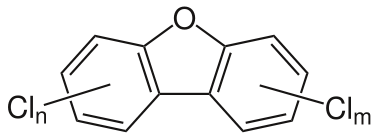
Figure 1: Molecular structure of dioxins

Figure 2: Molecular structure of Furans
ALS offering for Dioxins and Furans
|
Matrix |
LOQ |
Sample volume |
|
Soil/Sediment |
4 pg/g dw I-TEQ 4.3 pg/g dw WHO2005-TEQ |
5 g |
|
Ash |
10 pg/g dw I-TEQ 11 pg/g dw WHO2005-TEQ |
2 g |
|
Sludge/waste |
20 pg/g dw I-TEQ 21.5 pg/g dw WHO2005-TEQ |
1 g |
|
Water |
4.9 pg/L I-TEQ 5.3 pg/L WHO2005-TEQ |
1 L |
|
Air |
20 pg/sample I-TEQ |
|
|
Biota - food |
LOQ< 1/5 of maximal levels according to Commission Regulation (EU) No 1259/2011 |
|
|
Biota - feed |
LOQ< 1/5 of maximal levels according to Commission Regulation (EU) No 277/2012 |
|
|
Clinical samples (Blood, serum) |
20 pg/g of fat WHO2005-TEQ |
For 50 g of blood sample or for 30 g of serum |
Overview
Dioxins and Furans, also referred to as PCDD/F or Polychlorinated dibenzodioxins and Furans are unintentionally formed compounds. The main sources of dioxins are through combustion or as an impurity from other production processes:
- Emission from incinerators
- Impurity in PCB and chlorinated pesticides such as DDT or hexachlorobenzene.
Toxicity
Dioxins and furans are lipophilic and will accumulate in the food chain. The toxicity varies and the most toxic congener of the 210 is 2,3,7,8-tetrachlorodibensodioxin (2,3,7,8-TCDD). All other congeners has been given a Toxic equivalent Factor (TEF) that compares to 2,3,7,8-TCDD who has been assigned a TEF of 1. TEF’s varies between 0,01 and 1.
Dioxins and Furans are highly toxic. Exposure to these compounds can cause cancer, reproductive and developmental problems, damage the immune system and disrupt hormone function.
Table: International threshold values for Dioxins and Furans
|
Country |
Matrix |
Limit |
|
Czech Republic |
Soil |
5 ng/kg-1 |
|
Czech Republic |
Waste water |
0,3 ng TE/l-1 |
|
Turkey |
Air |
0,1 ng/Nm3 |
|
Turkey |
Water |
0,3 ng/L |
|
Turkey |
Sludge |
100 ngTEQ/kg DW |
|
Turkey |
Soil |
0,2 ng/kg |


